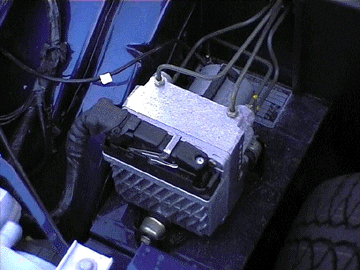|
|
|
Tracking Data, Performance data, Identifying a VVC from a 1.8 MPi |
| Ride height: | 368mm ±10mm* |
| Front wheel alignment: | Toe-out 0 degrees. 10min plus or minus 6mins - each wheel |
| Front wheel camber: | Negative 0deg. 30min. plus or minus 30 min. |
| Front wheel castor: | Positive 5deg. 0 min. plus or minus 55mins |
| Kingpin inclination: | 11 degrees. 40mins |
| Steering angle of inner wheel to outer wheel: Outer wheel | 29deg. 12 min. |
| Steering angle of inner wheel to outer wheel: Inner wheel | 34deg. 42mins |
| Rear wheel alignment: | Toe-in 0deg. 10mins plus or minus 6 min. |
| Rear wheel camber: | Negative 1deg.0min plus or minus 30mins. |
| NOTE: |
* Ride height measurements taken from wheel centre to wheel arch vertically above at 17celcius. Height changes by 0.6mm concomitantly with each degree above or below that temperature.
Front wheel alignment is Toe OUT, rear wheel alignment is Toe IN.
Suspension settings are for a vehicle at Kerbside weight with the steering wheel straight ahead
|
Data presented below are manufacturer's data. Power output and torque values have been independantly corroborated at K&N's rolling road facillity in March 1999. Trophy 160 data has not been corroborated at this time; it is interesting to not that the quoted in gear (4th) times are SLOWER than the existing standard VVC. |
Performance |
1.6i |
1.8i |
VVC |
Trophy 160 |
| Maximum Power | 114PS (112 bhp) | 120PS (118 bhp) @ 5500 rpm | 145PS (143 bhp) @ 7000 rpm | 160PS (158 bhp) @ 7000 rpm |
| Maximum torque | 165 Nm (EEC) @ 3000 rpm | 174 Nm (EEC) @ 4500 rpm | 174 Nm (EEC) @ 4500 rpm | |
| Maximum speed | 120 mph | 130 mph | 137 mph | |
| 0- 60 mph | 8.5 seconds | 7.0 seconds | 6.9 seconds | |
| 30- 50 mph (4th gear) | 6.6 seconds | 6.2 seconds | 6.4 seconds | |
| 50- 70 mph (4th gear) | 7.0 seconds | 6.5 seconds | 6.6 seconds | |
Fuel Economy [mpg/(L/ 100km)] |
||||
| Urban cycle | 27.8 (10.2) | 25.2 (11.2) | 25.2 (11.2) | |
| Extra urban | 49.3 (5.7) | 48.8 (5.8) | 48.8 (5.8) | |
| Combined | 38.3 (7.4) | 36.3 (7.8) | 36.3 (7.8) |
With the availability of second hand VVC style five spoke wheels, and the relative lack of outward identifying features between a 1.8i and a VVC, it is sensible for a potential purchaser of an MGF to arm themselves with a few easy methods of telling these two cars apart. See below, with pictures, for the features that identify a VVC.
| 1. Look at the wheels. A VVC should have five spoke alloys. Some cars have 16 inch diameter wheels as an option. If so, request to see documentation. However, a 1.8i can easily have had these wheels fitted at some time in its history. |
|
 |
2. Sit yourself in the drivers seat, and look at the dashboard. A VVC has a red line at 7250 rpm. A 1.8i had its red line at 6750 rpm. The picture also shows the additional warning lights associated with the ABS unit (option only on the 1.8i). |
| 3. Look at the trim of your intended purchase. VVCs have half leather trim AT A MINIMUM. See cloth seats, you are looking at a 1.8i. |  |
 |
4. If you get the chance, pop the front bonnet open. A VVC will have the ABS unit fitted as standard (seen here, positioned to the left of the spare wheel). On a 1.8i it was an optional extra. |
| 5. If you've looked under the front bonnet, you'd have had to open the boot. Whilst there, glimpse through the engine bay grill. On the right, you should be able to see the plenium chamber labeled "VVC". |  |
 |
6. I've saved the best for last. To be absolutely 100% sure that the car you are
looking at is a VVC, look at the chassis number. This can be found on the left hand side
of the car, through the base of the windscreen glass. Read off the 8th letter. It should
be a 'T' or a 'G'. If a letter 'T' then bingo, you are looking at a genuine VVC. If a 'G', a 1.8i. |
If any of the above points do not tally, then walk away. Remember that the F has proven to be a very popular sports car, so there are plenty of examples about! All that remains to say now is Good Luck! And enjoy Safety Fast!
Special thanks to Dave Bartram for the pictures above.